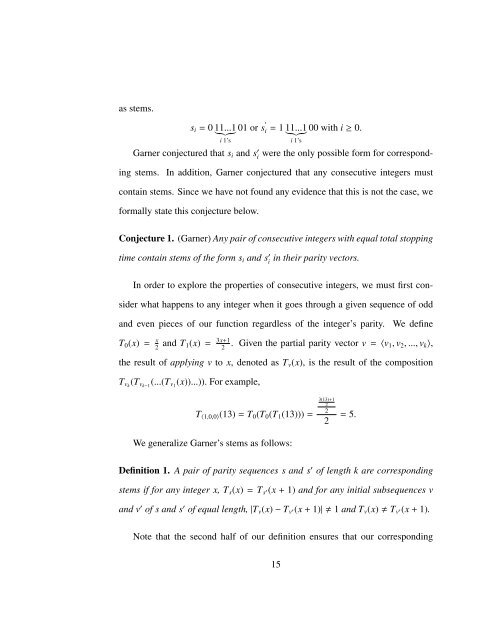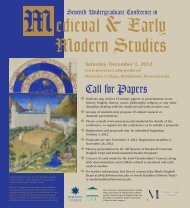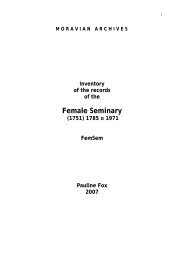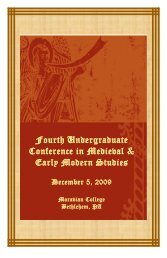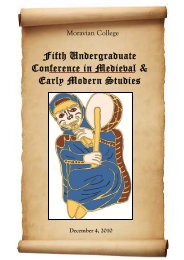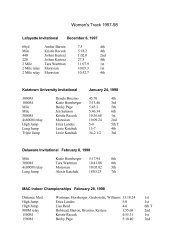Explorations of the Collatz Conjecture - Moravian College
Explorations of the Collatz Conjecture - Moravian College
Explorations of the Collatz Conjecture - Moravian College
Create successful ePaper yourself
Turn your PDF publications into a flip-book with our unique Google optimized e-Paper software.
as stems.<br />
s i = 0 11...1 01 or s ′ i = 1 11...1 00 with i ≥ 0.<br />
}{{}<br />
i 1’s<br />
}{{}<br />
i 1’s<br />
Garner conjectured that s i and s ′ i<br />
were <strong>the</strong> only possible form for corresponding<br />
stems. In addition, Garner conjectured that any consecutive integers must<br />
contain stems. Since we have not found any evidence that this is not <strong>the</strong> case, we<br />
formally state this conjecture below.<br />
<strong>Conjecture</strong> 1. (Garner) Any pair <strong>of</strong> consecutive integers with equal total stopping<br />
time contain stems <strong>of</strong> <strong>the</strong> form s i and s ′ i<br />
in <strong>the</strong>ir parity vectors.<br />
In order to explore <strong>the</strong> properties <strong>of</strong> consecutive integers, we must first consider<br />
what happens to any integer when it goes through a given sequence <strong>of</strong> odd<br />
and even pieces <strong>of</strong> our function regardless <strong>of</strong> <strong>the</strong> integer’s parity.<br />
We define<br />
T 0 (x) = x 2 and T 1(x) = 3x+1<br />
2 . Given <strong>the</strong> partial parity vector v = 〈v 1, v 2 , ..., v k 〉,<br />
<strong>the</strong> result <strong>of</strong> applying v to x, denoted as T v (x), is <strong>the</strong> result <strong>of</strong> <strong>the</strong> composition<br />
T vk (T vk−1 (...(T v1 (x))...)). For example,<br />
T 〈1,0,0〉 (13) = T 0 (T 0 (T 1 (13))) =<br />
We generalize Garner’s stems as follows:<br />
3(13)+1<br />
2<br />
2<br />
2<br />
= 5.<br />
Definition 1. A pair <strong>of</strong> parity sequences s and s ′ <strong>of</strong> length k are corresponding<br />
stems if for any integer x, T s (x) = T s ′(x + 1) and for any initial subsequences v<br />
and v ′ <strong>of</strong> s and s ′ <strong>of</strong> equal length, |T v (x) − T v ′(x + 1)| 1 and T v (x) T v ′(x + 1).<br />
Note that <strong>the</strong> second half <strong>of</strong> our definition ensures that our corresponding<br />
15


